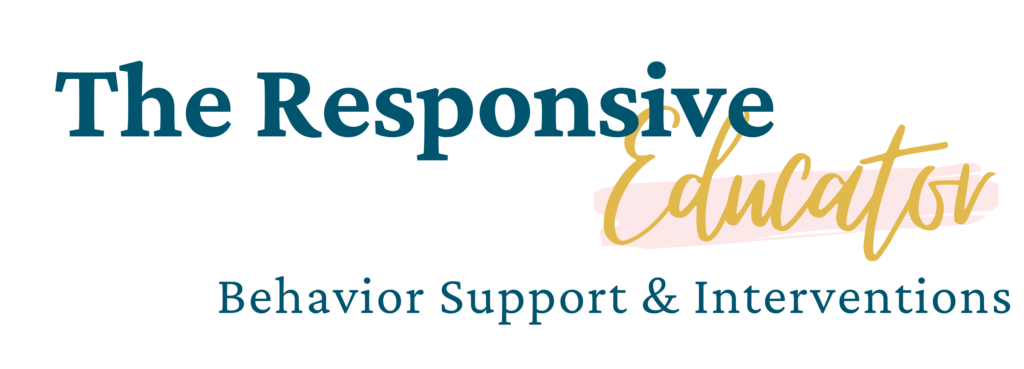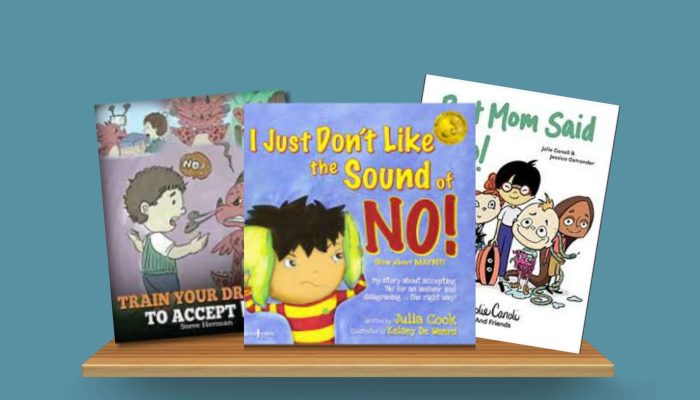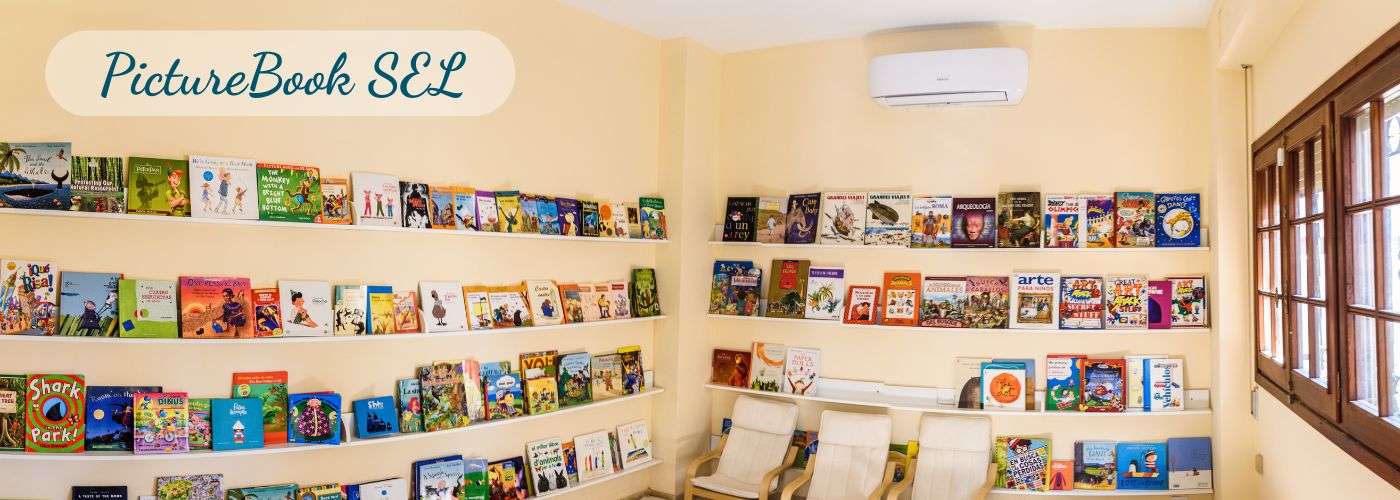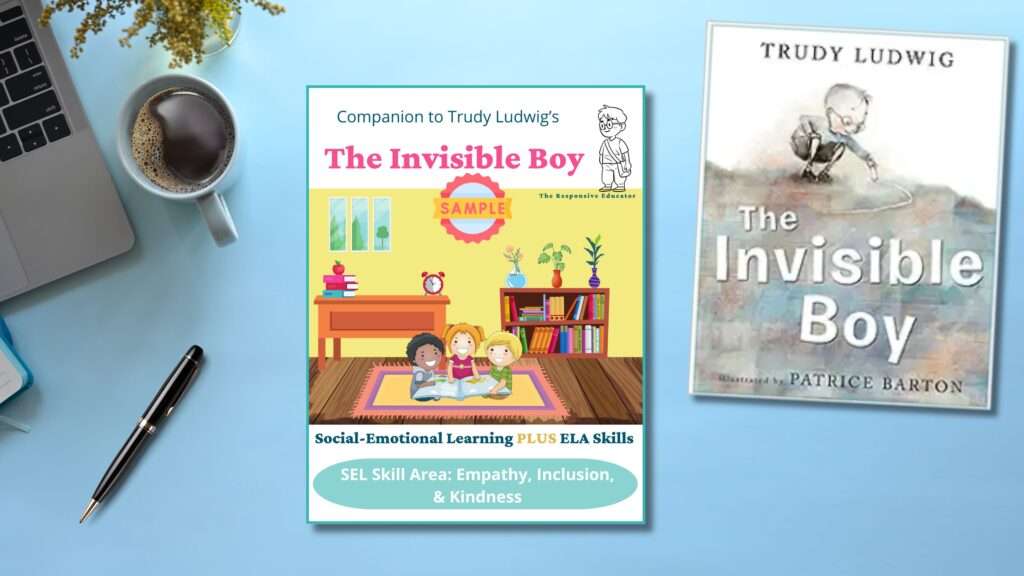


Teaching children to accept ‘no’ is an essential life skill that helps them manage disappointment, build patience and self-control, and respond positively to limits and boundaries. The following books are designed to help children understand why ‘no’ is sometimes the necessary answer and how to handle it with grace.
Some of these books are particularly engaging for younger elementary-aged children, but they are also highly effective for older students when used with discussion and guided instruction. Their messages are versatile and can be adapted to suit a wide range of developmental stages and individual needs. Whether in a classroom setting or at home, these books provide valuable tools for discussing the importance of managing disappointment and respecting boundaries.
For some of the books on this site, I’ve created interactive read-alouds designed to enrich their use in the classroom. These resources include discussion questions, activities, and prompts that actively engage students and deepen their understanding of key themes. More interactive read-alouds are on the way! If there’s a specific book you’d like to see included, please reach out using the contact form at the bottom of the page.
For more insights on supporting social-emotional learning (SEL) and incorporating interactive read-alouds into your teaching, explore these posts:
(As an Amazon affiliate, I earn a small commission if you purchase products through the links on my posts. Thank you for your support!)
Summary: In I Just Don’t Like the Sound of No!, Julia Cook introduces RJ, a young boy who has a hard time hearing the word “No.” Whether he’s at home, at school, or with friends, RJ struggles to accept boundaries when things don’t go his way. With the help of his teacher, RJ learns practical strategies for managing his reactions and handling disappointment with self-control. By the end of the book, RJ begins to understand that accepting “No” can lead to positive outcomes and that it’s an important skill for growing up.
Description: I Just Don’t Like the Sound of No! is an engaging picture book that helps children navigate the frustration that comes with hearing “No.” RJ’s experiences reflect common challenges kids face when dealing with boundaries, and his journey offers a practical approach to handling disappointment. The book provides strategies for children to develop self-regulation, such as asking respectfully for a different option or accepting the situation gracefully.
Kelsey De Weerd’s illustrations add to RJ’s story, bringing humor and energy to his reactions, making the lessons feel relatable and fun for young readers. The book serves as a great tool for teaching children the importance of accepting limits and controlling impulses.
Reviews and Reflections: Amazon reviews highlight how relatable I Just Don’t Like the Sound of No! is for both kids and adults. Parents and educators appreciate how the book offers simple, practical strategies that kids can use in everyday situations. Many reviewers mention how children connect with RJ’s struggles, making it easier to have conversations about emotional regulation and handling frustration. The lighthearted tone and humor help keep children engaged while they learn valuable lessons.
Several reviewers also mention that the book works well in classroom settings, as it opens up discussions about respecting rules and boundaries. Overall, readers find this book to be an effective resource for helping children learn how to manage disappointment and develop better self-control.
Bring the magic of dragons to your classroom with the interactive read-aloud lesson plan for Train Your Dragon to Accept ‘No’ by Steve Herman. This 100-page book companion is packed with over 40 engaging activities, providing 15-20 hours of lessons that seamlessly integrate social-emotional learning (SEL) and English Language Arts (ELA) skills. The lesson plan includes a variety of discussion questions, activities, and prompts designed to help students understand the importance of accepting ‘no’ and managing their emotions effectively.

Summary: In Train Your Dragon to Accept No, Steve Herman tells the story of Diggory Doo, a dragon who has a hard time hearing the word “No.” Whether it’s about wanting to play longer or have extra treats, Diggory Doo gets frustrated when he doesn’t get his way. Through gentle guidance, his owner helps him understand that hearing “No” is a part of life, and learning to accept it gracefully is an important skill. The book teaches young readers how to handle disappointment while maintaining self-control.
Description: Train Your Dragon to Accept No by Steve Herman is a charming and educational book that helps children learn how to manage their reactions when they hear the word “No.” Diggory Doo, the dragon, experiences the same frustrations that many kids face when told they can’t always get what they want. His journey toward understanding the importance of respecting boundaries offers children a clear example of how to handle disappointment with maturity and patience.
The book’s vibrant illustrations and engaging story make it a fun and relatable resource for teaching kids about emotional regulation and self-control. It emphasizes the importance of accepting limits while showing that hearing “No” can sometimes lead to better outcomes in the future.
Reviews and Reflections: According to Amazon reviews, Train Your Dragon to Accept No resonates with both parents and educators, as it provides practical strategies that help children manage frustration and disappointment. Many reviewers appreciate the relatable character of Diggory Doo and how his struggles mirror those of young children learning to accept boundaries. The book’s playful tone and colorful illustrations keep kids engaged while offering meaningful lessons about self-regulation.
Several readers highlight the effectiveness of using the dragon character to connect with children, making the lessons easier to absorb. Reviewers note that the book works well in both home and classroom settings, offering a valuable tool for teaching kids how to gracefully handle the word “No.”
Enhance your classroom experience with the interactive read-aloud lesson plan for I Just Don’t Like the Sound of No! by Julia Cook. This 97-page book companion features over 40 activities, providing 15-20 hours of engaging lessons covering social-emotional learning (SEL) and English Language Arts (ELA) skills. The lesson plan includes discussion questions, activities, and prompts that deepen students’ understanding of the book’s themes and help them develop patience, self-control, and positive behavior when faced with limits.

Summary: But Mom Said No! tells the story of five children who each have unusual pets, ranging from a 12-ton octopus to a 90-foot snake. Though they love their animals, the children quickly discover that not every pet belongs in a home. Through humorous twists, the story explores how parents often say “No” out of love and responsibility. As the kids navigate disappointment, they learn important lessons about healthy boundaries and understanding why some animals are better left in their natural environments.
Description: But Mom Said No! by Jolie Canoli is a fun, rhyming story that introduces young readers to the concept of healthy boundaries and responsible pet care. The children in the story bring home quirky and unusual animals, like penguins and dust bunnies, only to find that caring for them isn’t as simple as they imagined. Through the guidance of their moms, they learn that sometimes hearing “No” is necessary for their safety and the well-being of their pets.
With engaging illustrations and an entertaining storyline, this book is perfect for teaching kids about the importance of listening to their parents and understanding that “No” is often said with love and care. The story also touches on social-emotional themes such as dealing with disappointment and the importance of following rules.
Reviews and Reflections:
Amazon reviews praise But Mom Said No! for its fun rhyming text and vibrant illustrations, which keep children engaged while teaching valuable lessons about boundaries and responsibility. Parents appreciate how the book uses humor to explain why “No” can be a loving response, especially when it comes to pet care. Reviewers also highlight how the book fosters discussions about family rules and making safe, responsible choices.

Summary: In Don’t Let the Pigeon Drive the Bus!, a bus driver steps away and gives readers a simple task—make sure the pigeon doesn’t drive the bus! However, the persistent pigeon tries every trick in the book to convince the readers to let him drive. Through his humorous attempts, children learn about the importance of setting boundaries and staying firm when faced with peer pressure or persistent requests.
Description: Don’t Let the Pigeon Drive the Bus! by Mo Willems is a hilarious and engaging picture book where readers take an active role in keeping the pigeon from driving the bus. The pigeon’s funny, exaggerated pleas offer a relatable scenario for children, especially when it comes to hearing “No” and handling disappointment. The simple illustrations, combined with Willems’ witty writing, make the book a favorite for young readers.
This book is an excellent tool for teaching children about boundaries, persistence, and understanding that sometimes the answer to their requests has to be “No.”
Reviews and Reflections: Amazon reviews praise Don’t Let the Pigeon Drive the Bus! for its interactive style and humor, making it a hit with both children and adults. Many parents and teachers note that the book is great for engaging children in discussions about setting limits and dealing with frustration when things don’t go their way. The pigeon’s over-the-top reactions provide a fun, lighthearted way for children to see themselves in situations where they, too, might need to accept “No” gracefully.

Summary: Lilly’s Purple Plastic Purse tells the story of Lilly, an exuberant mouse who adores her teacher, Mr. Slinger. When she brings her shiny new purple plastic purse to school, she can’t wait to show it off, but her excitement disrupts the class. Mr. Slinger confiscates the purse, leaving Lilly hurt and angry. After some reflection, Lilly realizes she acted impulsively and learns the importance of apologizing, patience, and making amends.
Description: Lilly’s Purple Plastic Purse by Kevin Henkes is a relatable story that explores themes of impulsivity, consequences, and forgiveness. Lilly’s enthusiasm for her new purse leads to disruptive behavior in class, resulting in Mr. Slinger taking it away. Lilly’s initial anger shifts to understanding as she realizes the consequences of her actions. This charming and heartfelt story helps children navigate their emotions, teaching them valuable lessons about patience, self-control, and the importance of saying “I’m sorry.”
The engaging illustrations add depth to the story, bringing Lilly’s emotional journey to life. Henkes perfectly captures the ups and downs of childhood emotions, making the story highly relatable for young readers.
Reviews and Reflections: Amazon reviews highlight how Lilly’s Purple Plastic Purse resonates with children and adults alike. Parents and educators praise the book for its meaningful lessons on emotional regulation, responsibility, and the importance of apologies. Reviewers appreciate how the story encourages discussions about the impact of impulsive behavior and the value of understanding others’ perspectives. The relatable characters and emotional depth make this book a favorite for classroom and home reading, helping children learn to process their feelings and make amends when necessary.

Summary: Let’s Talk About Accepting No by Joy Berry is a practical guide for young readers that teaches children how to respond when they hear “No.” The book follows a child who learns to manage disappointment, frustration, and anger after being told “No” by adults. Through relatable scenarios, children are shown how to handle rejection with understanding and respect, emphasizing the importance of emotional control.
Description: Joy Berry’s Let’s Talk About Accepting No is part of her “Let’s Talk About” series, which helps children navigate tough social-emotional challenges. This particular book focuses on teaching kids how to accept the word “No” without acting out. The story presents real-life situations where kids are told “No” and encourages healthy responses like staying calm, understanding the reasons behind the denial, and accepting boundaries set by adults. The straightforward narrative helps kids learn to respect decisions made for their well-being.
The book also includes simple but clear illustrations, making it an engaging read for younger children. Parents and caregivers can use this book to start conversations about boundaries, self-control, and emotional regulation.
Reviews and Reflections: Amazon reviews suggest that Let’s Talk About Accepting No is a useful tool for teaching children how to cope with disappointment. Parents appreciate the book’s direct approach and how it encourages positive behavior. Many note that the relatable scenarios help their children understand why “No” is sometimes necessary, making it easier for them to manage their emotions in these situations. Teachers also find this book helpful for classroom discussions on respect, self-control, and decision-making.

Sign up now to receive a free sample of “The Invisible Boy” Interactive Read-Aloud Lesson Plan! This comprehensive resource includes engaging activities designed to help your students develop empathy and inclusion.
By signing up, you will also join our newsletter, where you’ll receive:
Join our community of educators dedicated to fostering social-emotional growth in the classroom!

( ) = Coming Soon
Body Safety & Personal Boundaries
(Conflict Resolution)
(Compromise / Cooperating)
Feelings & Emotional Awareness
(Sensory Processing)
(Sharing)
(Speaking Politely)
(Teasing & Bullying)
(Trauma Recovery)